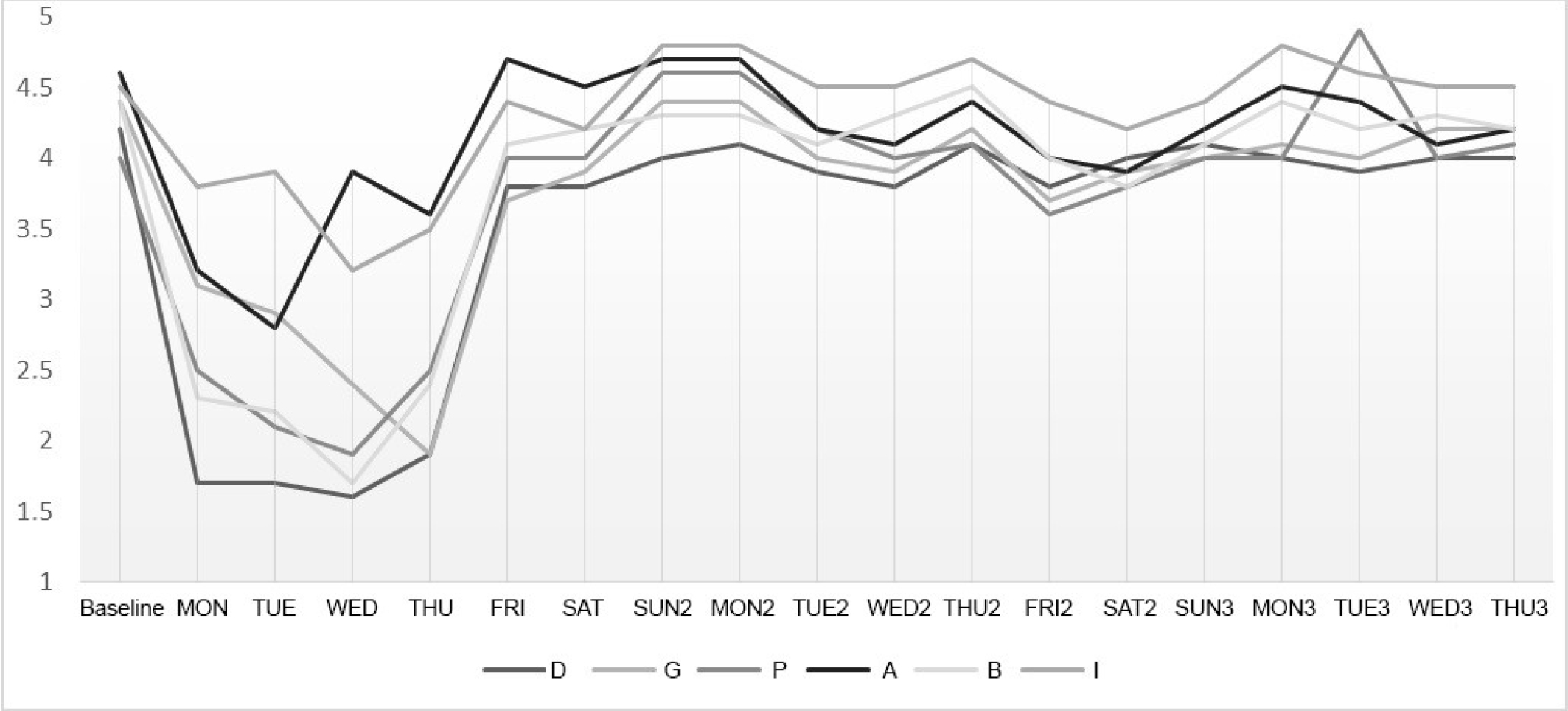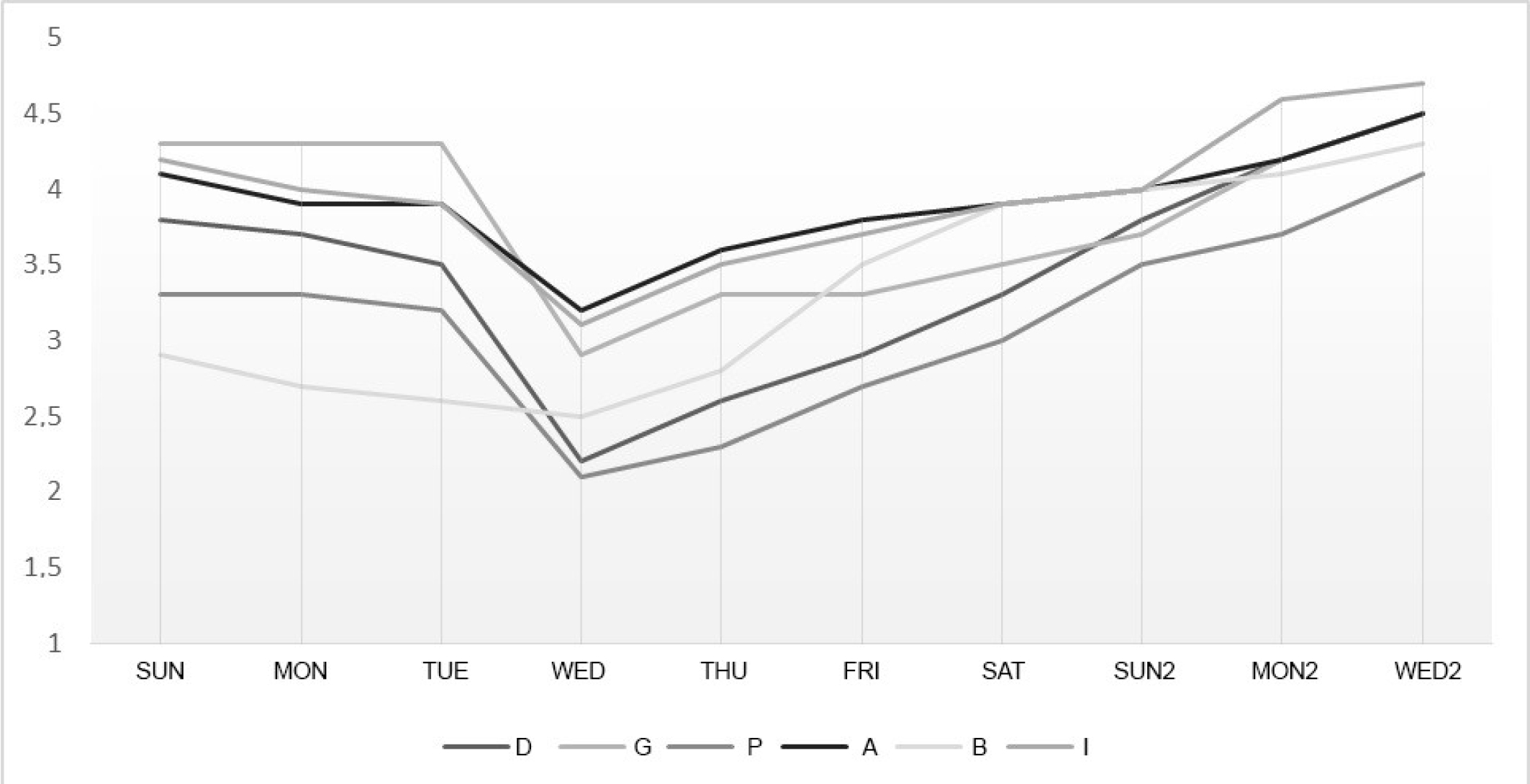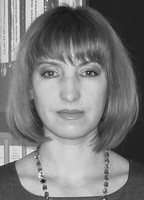Control of the functional state of highly qualified Taekwondo players in preparation for the main start of the season using the mid-mountain range
Фотографии:
ˑ:
PhD, Associate Professor I.A. Mishchenko1
PhD, Professor V.A. Kashkarov1
PhD, Associate Professor А.V. Vishnyakov1
PhD, Associate Professor Т.S. Frolova1
1Lipetsk State Pedagogical University named after P.P. Semenov-Tyan-Shansky, Lipetsk
Keywords: taekwondo, mesocycle, control, midlands, heart rate variability.
Introduction. In recent decades, specialists, working on planning of the training process for highly skilled athletes, have been paying increased attention to the stage of direct training for the major event of the macrocycle. This is primarily due to the changes in the competition system, consisting in a significantly increasing number of major events: from 6 to 8 per year. First of all, these changes affected martial arts, in particular taekwondo, as it resulted in the changed pre-Olympic qualification system [1].
At the direct training stage, control over the functional state of taekwondokas is of prime importance and is implemented in two directions: monitoring of the functional state of athletes during the adaptation and readaptation phases, as well as control over exercise tolerance during the last two microcycles - simulating and leading-up to the major event of the macrocycle .
Objective of the study was to increase the efficiency of elite taekwondokas’ training for the major event of the season.
Methods and structure of the study. We evaluated the system of planning of the direct training stage of highly skilled athletes for the major event. It consisted of two mesocycles: in the midlands - 3 and on the plain - 3.
Preparation for the major event began with the involving microcycle (the first week in the midlands) - the volume and intensity of physical loads being equal to 55-65% of the maximum. In the second microcycle, this indicator equaled 100%, and in the third one - 90-95%.
The first microcycle on the plain was restorative and fell on the acute phase of readaptation. Load parameters - 60-65% of the previous microcycle. The second and third microcycles - control and preparatory ones were to include simulative training or test competitions. Starting from the third microcycle, physical load reduced and there began a gradual lead-in to the major event with due regard to the individual characteristics of the functional state and its dynamics in athletes.
The dynamics of changes in the athletes’ functional state was studied using the HRV method, which determined the autonomic regulation of the physiological functions, and has recently become quite popular in elite sports [2, 3].
The functional state of elite taekwondokas was assessed at the stage of direct training for the major event in the midlands and simulating microcycle on the plain. Heart rate variability was analyzed at rest and during orthostatic test based on a 5-minute ECG recording using Poly-Spectrum-8/E and Poly-Spectrum-8/EX (Ivanovo, Russia). The study was conducted under standard conditions in the morning after waking up. Based on the data obtained, the integral indicator - general functional state (GFS) was calculated, which was assessed on a five-point scale.
The study involved 6 highly skilled taekwondokas (mean age 23.6±2.3 years old).
Results and discussion. The baseline examination was conducted before the departure. The analysis of the HRV rates at rest revealed that it was the spectrum power within the HF range that prevailed in all taekwondokas. The state of the mechanisms of regulation of the vegetative tonus was characterized as moderate and severe parasympathicotonia and unstressed vegetative balance. The registered stress index (SI) values were within the standard range in all athletes, which proves the absence of tension of the regulation mechanisms at rest. This is also evidenced by other indicators of the temporal analysis and variational pulsometry: quite high values of SDNN and RMSSD. The prevalence of parasympathetic influences is indicated by the low AMO and VAPR values.
The active orthostatic test showed that all taekwondokas had an adequate response to orthostasis. Their functional state, expressed in points, prior to the training camp in the midlands was above average (Figure 1).
The first days of the training camp in the midlands were characterized by the active bodily adaptation. The HRV analysis revealed that it was the spectrum power within the HF range that prevailed in 5 taekwondokas both in the prone position and in the baseline examination. The state of the mechanisms of regulation of the vegetative tonus was characterized as moderate and parasympathicotonia and unstressed vegetative balance in 4 athletes, in 2 taekwondokas - as severe parasympathicotonia. At the same time, the vagosympathetic balance index (LF/HF) equaled 0.42+0.16 c.u. The majority of subjects (4 out of 6) were observed to have a decrease in the spectrum total power (TP), what is more, in one of them it decreased by more than 10 times. One athlete reacted to the varied environment by increased TP as a result of a significant increase in the very low-frequency (VLF) and ultra-low-frequency (ULF) waves of the spectrum. One female athlete, against the background of decreased spectrum total power, demonstrated an insignificant sympathicotonia, the vagosympathetic balance index (LF/HF) – c.u. After the flight, the stress index, reflecting the degree of tension of the regulatory systems, increased sharply (5 to 30 times as much).
On the first day of adaptation to the midlands, the temporal analysis and variational pulsometry indices decreased in all taekwondokas. Thus, they were observed to have low SDNN and RMSSD values, which indicated a decrease in the heart rate variability. At the same time, an increase in the AMO and IARP indices was noted, indicating the growing activity of the sympathetic unit of autonomous regulation. In one athlete the IARP values exceeded the standard range, which is indicative of a pronounced decrease in the bodily adaptation reserves.
The active orthostatic test results indicated an excessive response to orthostasis in 4 athletes. 2 taekwondokas had a paradoxical response of the regulatory systems to orthostasis.
The complex analysis of the HRV indices registered on the first day of stay in the midlands made it possible to qualify the dynamics of the GFS as negative, as opposed to the baseline, at which it decreased from 1.7 to 3.8 points (Fig. 1)

Fig. 1. Dynamics of general functional state of highly skilled taekwondokas at direct training stage in midlands
The obtained HRV rates resulted in adjustments made to the training plan and an individually-differentiated approach to the training process design implemented in terms of control over the dynamics of HRV rates.
The first microcycle upon returning to the plain was restorative and fell on the phase of acute readaptation after the midlands. The second microcycle (simulating) was carried out in terms of control over the GFS of taekwondokas. On the first days of training, there was a slight increase in SDNN, RMSSD, PN50, AM50, SI and spectral analyses indices as opposed to the baseline before training in the midlands. Moreover, the taekwondokas’ functional state was deemed as average and above average (2.9-4.3 points) (Fig. 2).

Fig. 2. Dynamics of general functional state of highly skilled taekwondokas at direct training stage
Fig. 2 illustrates that after the third day of training the GFS of all athletes decreased, which was the result of using two unidirectional loads of high and moderate intensity. The examined athletes were found to have a decrease in the functional state and adaptive processes, which manifested itself primarily in the reduction of the general functional reserves of the regulatory mechanisms. This trend was noted in 5 taekwondokas. One athlete was registered to have a sharp increase in the spectrum total power (TP), with excessive activation of high-frequency (HF) and ultra-low-frequency (ULF) waves, which may be indicative of the excessive costs of the functional resources to perform training loads. The registered stress index exceeded the normal range in 5 subjects, which indicated increased tension of the regulatory systems.
The study of the temporal analysis and variational pulsometry indices found a decrease in the SDNN and RMSSD and AMO values in all taekwondokas, which proves decreased activity of both the sympathetic and parasympathetic units of the ANS. The only exception is 1 athlete, whose SDNN and RMSSD values increased, while AMO ones decreases, which indicates a significant predominance of the parasympathetic activity.
During the active orthostatic test all taekwondokas demonstrated paradoxical responses of the regulatory systems to orthostasis.
After the fourth day of training with one moderate intensity workout the GFS increased. At this stage, we made adjustments to the individual training programs, primarily, by means of a decrease in the volume of work in the 5th intensity zone. This enabled us to enhance the general functional state of the athletes, which was expressed in its positive dynamics until the end of the training event. The dynamics of the athletes’ GFS throughout the training period is presented in Fig. 2.
Conclusion. Leading elite sport trainers and specialists recognize that it is the direct training stage, and particularly the last 2-3 weeks, that are most important for successful performance in major competitions. Therefore, monitoring of the functional state using the heart rate variability method, and timely adjustment of training loads makes it possible to optimize the athletic training process at this stage and prepare them for the major event of the macrocycle keeping them close to the top competition form. The heart rate variability method thus proves effective for the assessment of athlete’s functional state of and timely correction of the training process.
References
- Kashkarov V.A., Ivanov V.A. Struktura i soderzhanie trenirovochnykh mikrotsiklov na bazovom etape tsentralizovannoy podgotovki tkhekvondistov vysokoy kvalifikatsii [Structure and contents of training microcycles on basic stage of centralized training of elite taekwondokas]. Teoriya i praktika fiz. kultury, 2012, no. 12, P. 3.
- Kolomietz O.I., Bykov E.V. Variabelnost' ritma serdtsa pri adaptatsii k fizicheskim nagruzkam razlichnoy napravlennosti [Heart rate variability during adaptation to multi-purpose physical loads]. Uch. zapiski un-ta im. P.F. Lesgafta, 2014, no. 12 (118), pp. 98-103.
- Shlyk N.I. Serdechny ritm i tip regulyatsii u detey, podrostkov i sportsmenov [Heart rate and regulation type in children, adolescents and athletes]. Izhevsk: Udmurt University publ., 2009, 255 p.
Corresponding author: mia-751@yandex.ru
Abstract
Objective of the study was to increase the efficiency of elite taekwondokas training for the major event of the season. A new model of taekwondo training process was tested, suggesting a combination of activities in the midlands and on the plain at the pre-season training stage. The functional state of elite taekwondokas was assessed at the stage of direct training for the major event in the midlands and simulating microcycle on the plain. Heart rate variability was analysed at rest and during orthostatic test based on a 5-minute ECG recording using Poly-Spectrum-8/E and Poly-Spectrum-8/EX (Ivanovo, Russia). The study was conducted under standard conditions in the morning after waking up. Based on the data obtained, the integral indicator - general functional state (GFS) was calculated, which was assessed on a five-point scale.
Six highly skilled taekwondokas took part in the study. As a result of monitoring using heart rate variability rates, the training effects that had led to successful competitive performance were specified.


